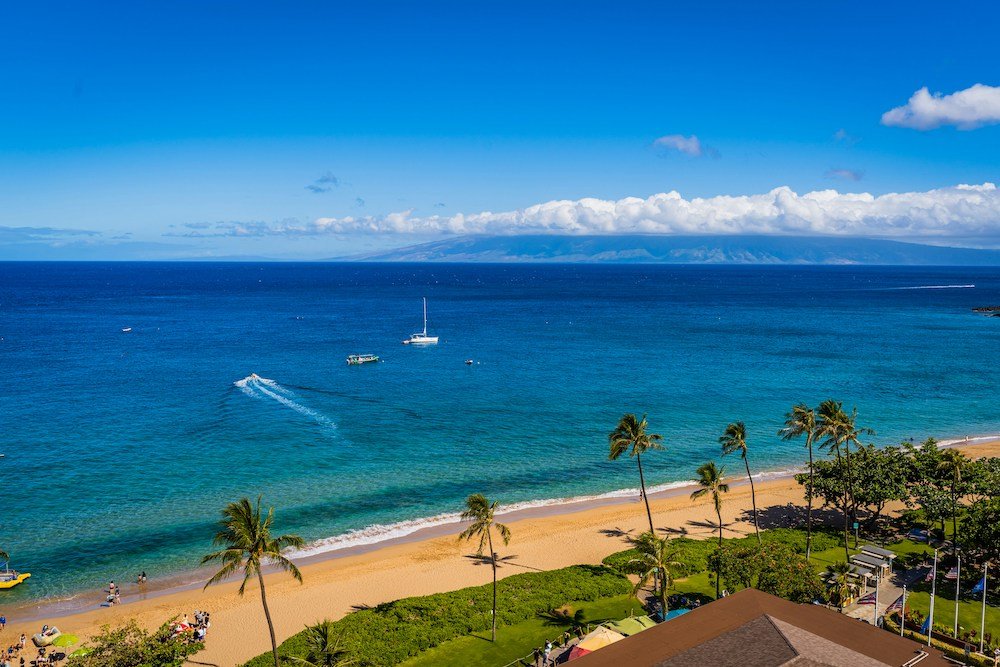
Kauai vs Big Island – Want to discover which is the best island for you?
Hawaii, a lush archipelago located in the central Pacific, is renowned for its breathtaking landscapes, rich cultural heritage, and diverse ecosystems.
Among its islands, Kauai and The Big Island stand out as jewels in the Hawaiian crown, each offering unique experiences that draw visitors from around the globe.
Kauai, known as “The Garden Isle,” is celebrated for its verdant landscapes, dramatic cliffs, and pristine beaches.
In contrast, The Big Island, officially named Hawaii Island, is famed for its volcanic landscapes, diverse climates, and expansive terrain.
Despite their shared tropical paradise status, Kauai and The Big Island cater to distinctly different travel preferences and adventures.
The essence of “Kauai vs. Big Island” goes beyond just comparing two destinations; it’s about understanding the heart and soul of each island.
Whether you’re drawn to the intimate, lush landscapes of Kauai or the grand, geological wonders of The Big Island, each island presents a unique palette of experiences.
In this comprehensive guide, we delve into the differences and unique features of Kauai and The Big Island.
Our aim is to showcase the distinct character of each island, helping you, the traveler, to decide which island best matches your dream Hawaiian vacation.
From natural attractions and activities to culture, dining, and accommodations, we’ll explore what makes each island unique, setting the stage for an unforgettable journey into the heart of Hawaii.
Overview of Kauai
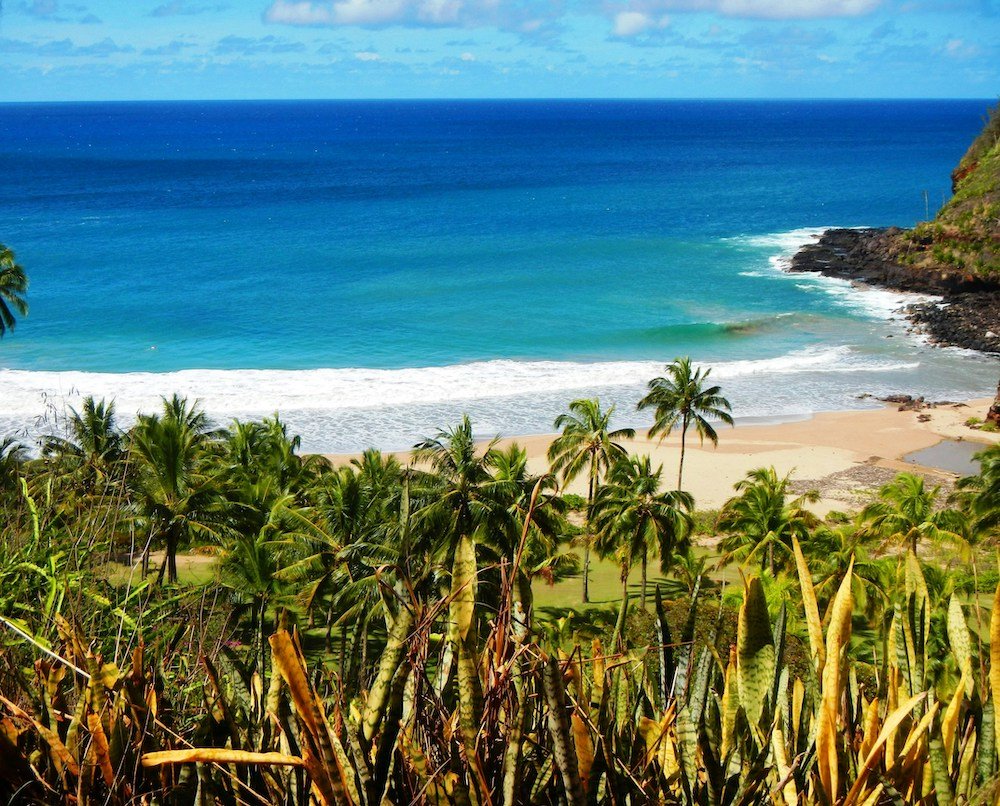
Kauai, aptly nicknamed “The Garden Isle,” is the oldest and fourth-largest island in the Hawaiian archipelago.
Its lush landscapes, cascading waterfalls, and emerald valleys paint a picture of a tropical paradise that captivates the hearts of all who visit.
Kauai’s natural beauty is unparalleled, offering a serene retreat into nature’s embrace, away from the hustle and bustle of Hawaii’s more populous islands.
Geographical and Climatic Features
The island’s geography is a testament to its volcanic origins, with the majestic Na Pali Coast’s cliffs and the expansive Waimea Canyon, often referred to as “The Grand Canyon of the Pacific,” showcasing nature’s artistry.
Kauai’s climate is as varied as its landscape, ranging from the dry and sunny shores of the south to the lush, rain-drenched mountains of the interior.
Mount Waialeale, one of the wettest spots on earth, epitomizes the island’s diverse climatic conditions, contributing to its rich, green landscapes that earn Kauai its nickname.
Brief History and Cultural Significance
Kauai’s history is deeply rooted in its native Hawaiian heritage, with archaeological evidence suggesting that Polynesian voyagers first settled on the island approximately 1,500 years ago.
This rich history is woven into the fabric of the island, with numerous heiau (sacred sites), ancient fishponds, and cultural festivals celebrating its indigenous roots.
The island has a storied past, including its resistance to King Kamehameha’s unification of the Hawaiian Islands, which adds to its unique character and pride.
Kauai’s cultural tapestry is further enriched by the diverse communities that have called the island home throughout its history, including Filipino, Japanese, and Portuguese immigrants who came to work in the sugar plantations during the 19th and 20th centuries.
This multicultural heritage is celebrated in the island’s food, festivals, and daily life, creating a vibrant community that respects its past while looking forward to the future.
In summary, Kauai is not just a destination; it’s a journey back in time to the origins of Hawaii, offering visitors a chance to explore its breathtaking natural beauty, delve into its rich cultural heritage, and experience the aloha spirit that is deeply embedded in its identity.
Overview of The Big Island
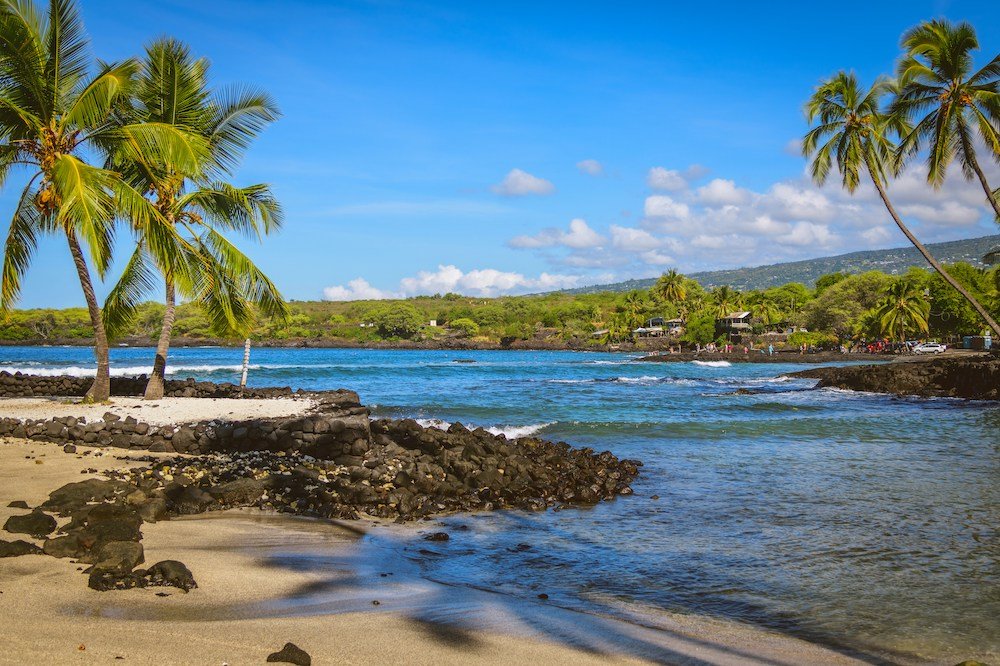
The Big Island, officially named Hawaii Island, stands as the youngest and largest in the Hawaiian archipelago, earning its nickname, “The Island of Adventure,” through its vast landscapes and diverse ecosystems.
From snow-capped mountains to active volcanoes, and from black sand beaches to lush rainforests, The Big Island offers a world of exploration and adventure, encapsulating the immense diversity of nature’s creations in one island.
Size, Geography, and Climate Diversity
Encompassing an area of over 4,000 square miles, The Big Island is big enough to fit all the other Hawaiian Islands combined, twice over.
This vastness contributes to its dramatic geography, which includes Maunakea, the tallest sea mountain in the world when measured from the ocean floor, and Maunaloa, one of the largest volcanoes on earth.
The island is home to Hawaii Volcanoes National Park, where visitors can witness the raw power of creation through Kilauea, one of the most active volcanoes in the world.
The Big Island’s climate is as varied as its landscapes, offering 11 of the world’s 13 climate zones.
From the arid lava fields of the Kona coast to the tropical rainforests near Hilo, and from the cool, misty highlands of Waimea to the snow-capped peaks of Maunakea, the island provides a unique climate adventure at every turn.
Brief History and Cultural Highlights
The history of Hawaii Island is a saga of discovery, conflict, and unity.
Believed to be the first of the Hawaiian Islands settled by Polynesians, its rich history is steeped in the legends and traditions of the Native Hawaiian people.
Sites like Pu’ukohola Heiau National Historic Site pay homage to the island’s historical significance as a center for political power and religious life.
The Big Island also played a pivotal role in the unification of the Hawaiian Islands under King Kamehameha the Great, a native of Hawaii Island.
His legacy is celebrated throughout the island, not least at the imposing statue of him in Hilo town.
The cultural heritage of the island is a tapestry of the many peoples who have made Hawaii Island their home, including significant influences from Asian, European, and American settlers, each adding to the rich cultural mosaic.
Agriculture has long been a staple of the island’s economy and culture, with coffee, macadamia nuts, and tropical fruits flourishing in its fertile soils.
The Big Island is also renowned for its astronomical research, with the observatories atop Maunakea contributing to significant scientific discoveries, thanks to the clear skies and minimal light pollution.
In summary, The Big Island of Hawaii is a land of contrasts and extremes, where fire meets snow, and desert meets rainforest.
It offers a deep dive into Hawaii’s natural wonders and a rich cultural experience that intertwines the past and present, inviting adventurers and explorers to discover its many secrets.
Kauai vs. Big Island: Natural Attractions

The natural attractions of Kauai and The Big Island encapsulate the breathtaking diversity of Hawaii’s landscapes, each offering its own unique set of experiences.
From the dramatic cliffs and lush valleys of Kauai to the volcanic landscapes and diverse climates of The Big Island, the natural wonders of these islands cater to a wide array of interests and adventure levels.
Comparison of Landscapes
Beaches: Kauai’s beaches are renowned for their beauty and seclusion, offering serene spots like Hanalei Bay and Tunnels Beach. The Big Island, on the other hand, boasts unique black sand beaches such as Punalu’u, a result of volcanic activity, and green sand beaches like Papakōlea, one of the only four in the world.
Mountains: Kauai’s Waimea Canyon, the “Grand Canyon of the Pacific,” offers breathtaking vistas of crested buttes and rugged crags. In contrast, The Big Island’s Maunakea offers a different kind of awe, being the tallest sea mountain in the world and home to world-class observatories.
Valleys: The Na Pali Coast on Kauai features some of the most dramatic and inaccessible valleys in the world, offering stunning views from hikes or boat tours. The Big Island’s valleys, such as Waipio Valley, are steeped in history and culture, surrounded by towering cliffs and lush vegetation.
Volcanoes: While Kauai’s volcanic landscapes are ancient and largely eroded, giving way to lush flora, The Big Island is geologically young, home to Kilauea and Maunaloa, among the world’s most active volcanoes, providing a rare opportunity to witness volcanic activity up close.
Unique Natural Attractions
Kauai: The Na Pali Coast, inaccessible by road, offers some of the most stunning coastal scenery in Hawaii. Hiking the Kalalau Trail or kayaking along the coast reveals sheer cliffs, verdant valleys, and pristine beaches. The island’s interior, with places like the Alakai Swamp, offers a glimpse into a prehistoric world of lush forests and rare flora and fauna.
The Big Island: Hawaii Volcanoes National Park is a showcase of the island’s volcanic heritage, where visitors can see active lava flows, walk through lava tubes, and learn about the island’s formation. The diversity of climates and landscapes also allows for unique experiences like stargazing from Maunakea, exploring the rainforests of Hilo, or snorkeling in the clear waters of Kealakekua Bay.
Accessibility and Adventure Level
Kauai: Many of Kauai’s natural attractions, like the Na Pali Coast, require a moderate to high level of adventure, accessible only by hiking, boat, or helicopter. However, there are also plenty of accessible spots like Waimea Canyon Lookout and numerous beaches that offer breathtaking natural beauty with minimal effort.
The Big Island: The Big Island’s attractions range widely in accessibility. Hawaii Volcanoes National Park and most beaches are easily accessible by car and short walks. However, exploring the summit of Maunakea requires a 4WD and special precautions due to the high altitude. Adventures like hiking to green sand beaches or exploring the valleys may require a higher level of physical fitness and adventurous spirit.
In summary, “Kauai vs. Big Island” in terms of natural attractions presents a choice between the intimate, lush landscapes of Kauai and the grand, geological wonders of The Big Island.
Each island caters to a different type of adventure and exploration, from serene beaches and lush valleys to active volcanoes and diverse climates, offering unique experiences that make Hawaii a premier destination for nature lovers.
Kauai vs. Big Island: Activities and Experiences

When deciding between Kauai and The Big Island, the range of outdoor activities and unique experiences each offers plays a crucial role.
Both islands cater to adventure-seekers and nature lovers but in distinct ways that reflect their unique landscapes and attractions.
Outdoor Activities
Hiking: Kauai is a hiker’s paradise, with trails like the Kalalau Trail along the Na Pali Coast and the trails leading to the vistas of Waimea Canyon offering unparalleled scenic beauty. The Big Island’s diverse landscapes provide a wide range of hiking experiences, from the lunar landscapes of Hawaii Volcanoes National Park to the verdant trails of the Hamakua Coast.
Snorkeling and Diving: Both islands boast fantastic snorkeling and diving spots. Kauai’s Tunnels Beach and Poipu Beach Park are known for their clear waters and abundant marine life. The Big Island steps up the game with unique experiences like snorkeling in Kealakekua Bay, a marine sanctuary, or diving with manta rays at night off the Kona Coast.
Surfing: Surfing is excellent on both islands, with Kauai offering legendary spots like Hanalei Bay for all levels and The Big Island presenting unique opportunities such as surfing at Pohoiki, a new black sand beach formed by recent lava flows.
Unique Experiences
Kauai: Helicopter tours on Kauai provide breathtaking aerial views of the Na Pali Coast, Waimea Canyon, and Mount Waialeale’s waterfalls, offering perspectives unreachable by land. Another unique experience is kayaking the Wailua River, the only navigable river in Hawaii, leading to sacred sites and hidden waterfalls.
The Big Island: Manta ray night dives and snorkels off the Kona Coast offer a once-in-a-lifetime experience, swimming alongside these gentle giants. The Big Island is also unique in offering tours of Kilauea’s volcanic landscapes, including lava viewing opportunities when conditions permit.
Season-Specific Activities or Events
Kauai: Seasonal events on Kauai include the Waimea Town Celebration in February, showcasing Hawaiian culture, and the Kauai Marathon in September, taking runners through some of the island’s most beautiful landscapes.
The Big Island: The Big Island’s Merrie Monarch Festival in April is the world’s premier hula competition, attracting visitors from around the globe. Seasonal natural events include whale watching from December to April and witnessing the night-time glow of Kilauea volcano, which varies in intensity but is a year-round attraction.
In comparing “Kauai vs. Big Island” regarding activities and experiences, both islands offer an array of outdoor adventures from the sea to the sky, with unique experiences that leverage their natural features.
Kauai, with its lush landscapes and dramatic coastlines, offers serene beauty and intimate encounters with nature.
In contrast, The Big Island provides a broader spectrum of adventures, from volcanic exploration to unique marine experiences, catering to a wider range of interests and thrill levels.
Regardless of choice, both islands promise unforgettable experiences that embody the spirit of Hawaii.
Kauai vs. Big Island: Accommodations and Dining
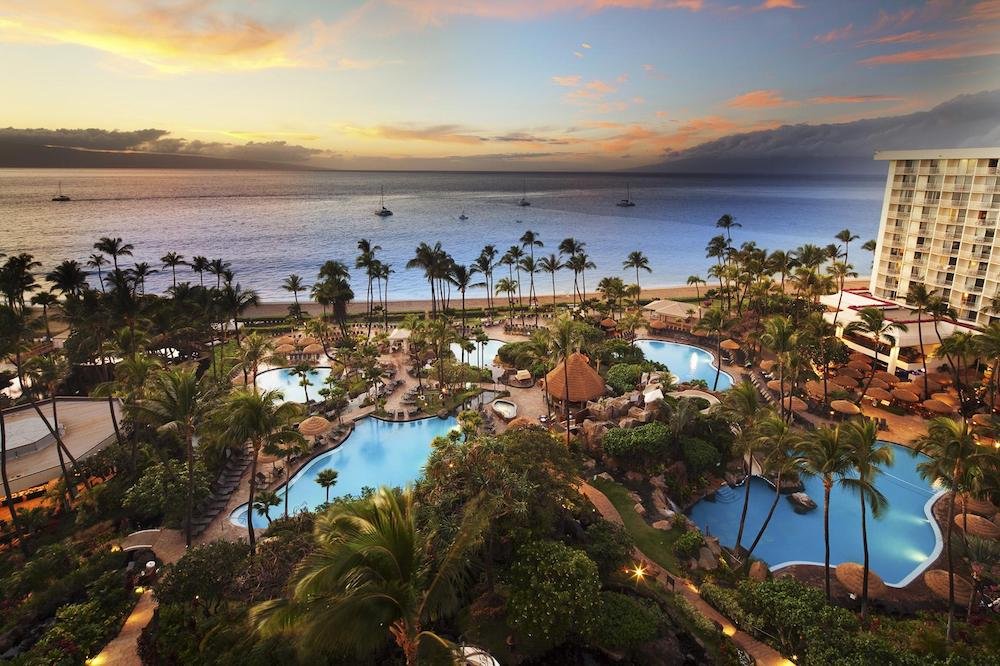
Choosing between Kauai and The Big Island often comes down to the types of accommodations and dining experiences each offers.
Both islands cater to a wide range of preferences and budgets, from luxurious resorts to more modest, budget-friendly options.
However, the ambiance, location, and culinary scenes offer distinct experiences reflective of each island’s unique character.
Accommodations
Kauai: Accommodations on Kauai tend to emphasize harmony with the island’s natural beauty, offering a range of options from luxury resorts in Princeville and Poipu to quaint bed-and-breakfasts and vacation rentals scattered around the island. The focus is on tranquility and scenic vistas, with many properties offering direct beach access or set within lush tropical gardens.
The Big Island: The Big Island’s accommodations are as diverse as its landscapes, featuring everything from world-class luxury resorts along the Kohala Coast, known for their beautiful beaches and golf courses, to rustic lodges near Hawaii Volcanoes National Park. Hilo offers more budget-friendly hotel options, and there are numerous vacation rentals across the island that cater to those seeking a more personalized experience.
Dining Scene
Kauai: The dining scene in Kauai is a reflection of its lush environment, with an emphasis on farm-to-table dining and fresh, local ingredients. Restaurants range from high-end dining experiences to casual, beachfront eateries and food trucks. The island’s farmer’s markets, such as those in Hanalei and Koloa, are great places to sample local fruits, vegetables, and artisanal products, showcasing the bounty of the island’s fertile soils.
The Big Island: The Big Island’s dining scene is as varied as its geography, offering a wide array of culinary experiences that highlight the island’s diverse agricultural products, including coffee, macadamia nuts, and fresh seafood. From luxury resort dining to local eateries and coffee shops, the emphasis is on diversity and innovation. The Big Island is also famous for its farmer’s markets, such as the Hilo Farmers Market and the Kona Farmers Market, where visitors can enjoy local specialties and fresh produce.
Unique Dining Experiences
Kauai: Unique dining experiences on Kauai often involve outdoor settings that make the most of the island’s spectacular landscapes, such as oceanfront dining under the stars or in the shadow of dramatic mountain ranges.
The Big Island: On The Big Island, unique dining experiences might include coffee farm tours followed by tastings, dining within sight of an active volcano, or enjoying a meal at a restaurant specializing in using volcanic heat for cooking.
When considering “Kauai vs. Big Island” in terms of accommodations and dining, the choice depends on the type of experience you’re seeking. Kauai offers a more intimate connection with nature and a laid-back vibe in both its accommodations and dining options, ideal for those looking to relax and rejuvenate.
The Big Island, with its wider range of climates and geographic features, offers more diversity in accommodations and dining, catering to adventurers and those wishing to explore the island’s vast culinary landscape.
Both islands, however, are committed to showcasing local ingredients and providing guests with a taste of Hawaiian hospitality.
Kauai vs. Big Island: Culture and Local Life
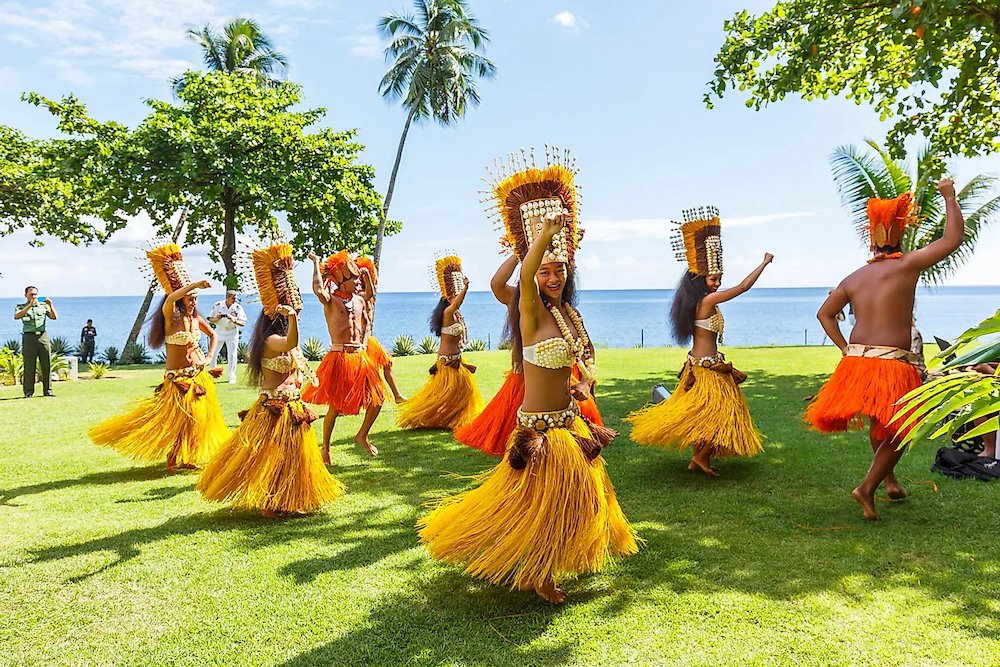
The cultural experiences and local life of Kauai and The Big Island offer insights into Hawaii’s rich history, diverse communities, and the aloha spirit that defines the islands.
Both islands boast unique cultural attractions, from festivals and museums to historical sites, yet the vibe and pace of life can differ significantly, reflecting their distinct personalities.
Cultural Experiences
Kauai: Kauai’s cultural experiences are deeply rooted in its natural landscapes and history. The island hosts several festivals throughout the year that celebrate its Hawaiian heritage, including the Prince Kuhio Celebration and the Kauai Mokihana Festival. Historical sites like the ancient Polynesian navigational stones at Nawiliwili and the Kilohana Plantation offer glimpses into the island’s past. Museums such as the Kauai Museum and Grove Farm Homestead Museum provide in-depth looks at the island’s history and culture.
The Big Island: The Big Island’s cultural experiences are as varied as its landscapes. The Merrie Monarch Festival, the world’s premier hula competition, showcases the artistry and tradition of Hawaiian dance. Historical sites such as Pu’uhonua o Hōnaunau National Historical Park, a place of refuge under ancient Hawaiian law, and the petroglyph fields at Puako offer insights into the island’s rich cultural heritage. The Imiloa Astronomy Center of Hawaii melds modern science with ancient Polynesian navigational techniques, highlighting the island’s role in astronomical research.
Vibe and Pace of Local Life
Kauai: The vibe on Kauai is laid-back and serene, reflecting its lush landscapes and small-town feel. Community engagement is strong, with locals and visitors alike encouraged to participate in beach clean-ups and cultural preservation efforts. The pace of life is slow, allowing for deep connections with the land and people. Hospitality is warm and personal, with a genuine interest in sharing the beauty and culture of the island.
The Big Island: The Big Island’s vibe is one of adventure and discovery, influenced by its vast landscapes and diverse climates. The pace of life varies across the island, from the bustling towns of Kona and Hilo to the quiet, rural areas where coffee farms and ranches dominate. Community engagement focuses on sustainability and environmental protection, with numerous opportunities for visitors to learn about volcanic preservation, marine conservation, and more. Hospitality is hearty and generous, with a pride in the island’s natural wonders and cultural achievements.
Community Engagement and Hospitality
Both Kauai and The Big Island are known for their strong sense of community and the aloha spirit that welcomes visitors. Kauai’s smaller size fosters a close-knit community feel, where local life revolves around the island’s natural rhythms and traditions.
In contrast, The Big Island’s larger, more diverse environment offers a broader range of cultural and community engagement opportunities, reflecting its size and the variety of experiences it offers.
In comparing “Kauai vs. Big Island” regarding culture and local life, both islands offer rich cultural experiences and a welcoming atmosphere but cater to different preferences.
Kauai is perfect for those seeking a peaceful retreat into nature and tradition, while The Big Island offers a dynamic blend of adventure, discovery, and cultural diversity, appealing to those looking to explore the breadth of Hawaiian culture and community life.
Kauai vs. Big Island: Transportation and Accessibility
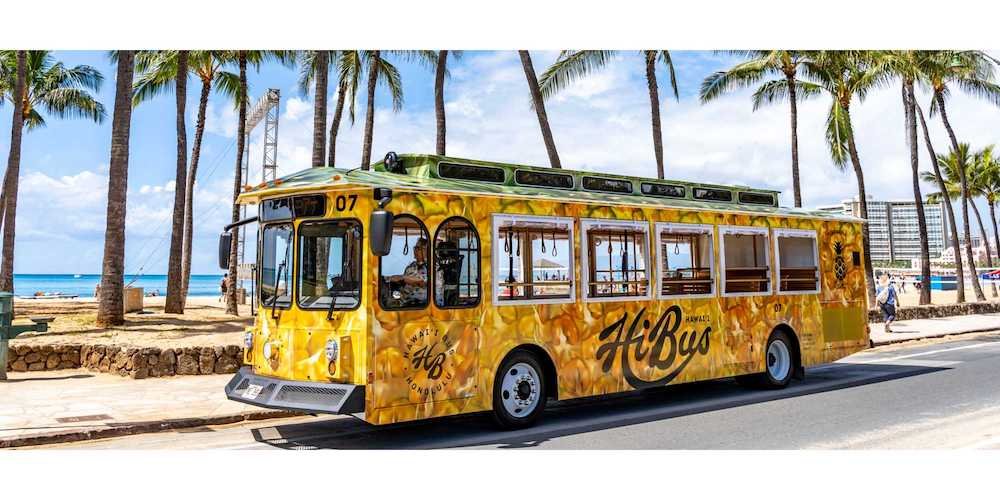
When planning a trip to Hawaii, understanding the transportation options and accessibility of each island can significantly enhance your travel experience.
Kauai and The Big Island each have their unique geographical features and sizes, which influence the best ways to explore them.
Here’s what you need to know about getting to and around Kauai and The Big Island.
Getting to and Around Each Island
Kauai: Lihue Airport (LIH) is the primary gateway to Kauai, serving direct flights from the mainland USA and Honolulu. The island’s compact size makes it relatively easy to explore. Rental cars are the most convenient option for getting around, allowing visitors the flexibility to explore the island’s diverse landscapes at their own pace. Public transportation exists in the form of the Kauai Bus, which serves major communities and attractions, though it may be less convenient for those looking to venture off the beaten path.
The Big Island: Kona International Airport (KOA) on the west side and Hilo International Airport (ITO) on the east side are the two main entry points, offering flexibility depending on your itinerary. The Big Island’s vast size makes a rental car almost essential for exploring widely separated attractions such as Hawaii Volcanoes National Park, Maunakea, and various beaches and valleys. While public transportation is available via the Hele-On Bus, routes and schedules might not align with all tourist destinations, making self-drive the more practical option.
Tips on Inter-Island Travel
Inter-island flights are the quickest and most efficient way to travel between Kauai and The Big Island, with several daily flights operated by local carriers.
The flight time is relatively short, generally under an hour, making even day trips feasible if you’re short on time but eager to experience both islands.
Best Modes of Transportation for Tourists
Rental Cars: Undoubtedly, renting a car offers the greatest flexibility and convenience on both Kauai and The Big Island. It allows you to explore at your own pace and access more remote areas that public transportation doesn’t reach.
Tours: For those who prefer not to drive, organized tours can be an excellent way to see the islands’ highlights. They offer the added benefit of guided commentary, providing deeper insights into the cultural and natural landmarks.
Biking and Walking: In smaller communities and resort areas, biking and walking can be delightful ways to explore. Places like Poipu on Kauai and certain coastal areas on The Big Island are conducive to these more leisurely and eco-friendly modes of travel.
In summary, “Kauai vs. Big Island” in terms of transportation and accessibility reflects their differences in size and geography.
Kauai’s smaller, more compact nature makes it easier to traverse, offering a mix of rental car flexibility and limited public transport options.
The Big Island, with its vast landscapes, necessitates a rental car for those wishing to fully explore its diverse environments.
Regardless of your choice, planning ahead and considering how you prefer to travel will ensure a smooth and enjoyable Hawaiian adventure.
Pros and Cons of Each Island
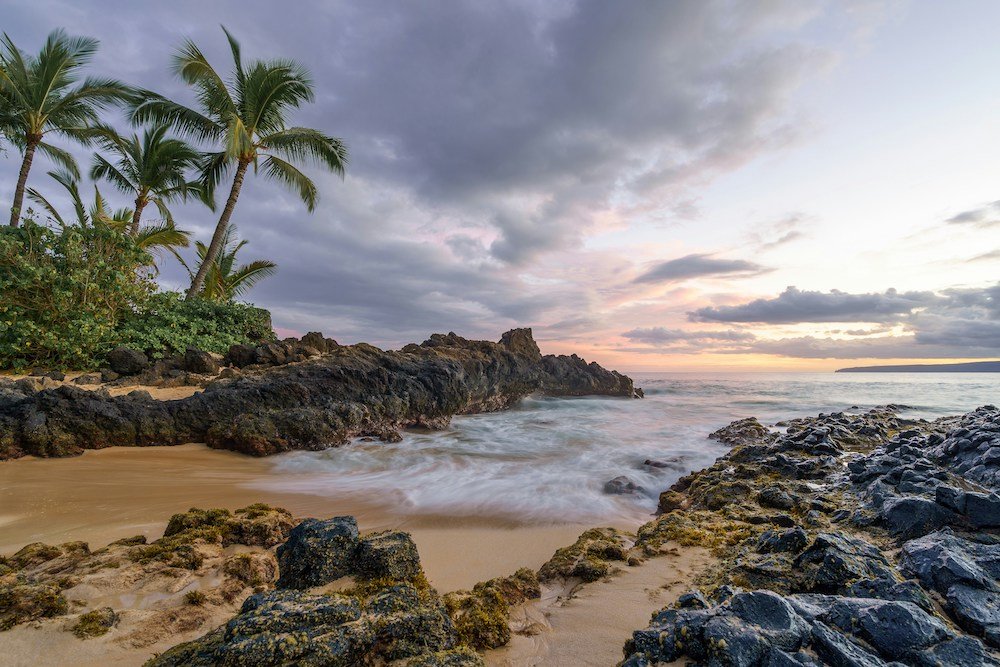
Choosing between Kauai and The Big Island for your Hawaiian vacation depends on various factors, including your travel objectives, budget, and preferences for crowd sizes and activities.
Here’s a summary of the advantages and limitations of visiting each island to help guide your decision.
Kauai
Pros:
- Natural Beauty: Kauai’s lush landscapes, dramatic cliffs, and pristine beaches offer breathtaking views and a serene atmosphere.
- Adventure and Relaxation: Ideal for those seeking outdoor adventures like hiking and kayaking or simply relaxing on secluded beaches.
- Cultural Experiences: Offers a rich array of cultural sites and festivals that highlight the island’s history and heritage.
- Smaller Crowds: Generally, Kauai has fewer tourists compared to Oahu and Maui, providing a more intimate and less crowded experience.
Cons:
- Limited Nightlife: The nightlife on Kauai is relatively low-key, with fewer bars and nightclubs open late.
- Transportation: While the island is compact, having a rental car is essential for exploring, which can add to the overall cost of the trip.
- Weather Variability: The island’s diverse microclimates mean that rain is possible year-round, especially on the North Shore.
The Big Island
Pros:
- Diverse Landscapes: Home to some of the most varied scenery in Hawaii, from volcanic deserts to rainforests and snow-capped mountains.
- Unique Experiences: Offers unique experiences like night snorkeling with manta rays and visiting active volcanoes.
- Cultural and Scientific Attractions: Rich in cultural sites and home to world-renowned astronomical observatories.
- Activities for Everyone: A wide range of activities to suit all ages and interests, from adventure seekers to those interested in history and culture.
Cons:
- Size: The island’s large size means that driving distances between attractions can be long, requiring more planning and time.
- Variable Weather: Similar to Kauai, the Big Island’s diverse climates mean that travelers should be prepared for changing weather conditions.
- Cost: Accommodation and dining options vary widely, but the cost of travel can be higher, especially when factoring in the need for a rental car to explore the island fully.
Considerations for Choosing
- Travel Objectives: If your goal is to immerse yourself in natural beauty and relaxation with fewer crowds, Kauai might be your ideal destination. For those seeking adventure, geological wonders, and a wide array of activities, The Big Island could be a better fit.
- Cost: Both islands offer a range of accommodation and dining options to suit different budgets, but the overall cost of your trip may vary based on the length of stay, transportation choices, and the types of activities you plan to do.
- Crowd Sizes: If avoiding large crowds is a priority, Kauai tends to be less crowded than The Big Island, which has more diverse attractions that draw a wide range of tourists.
Ultimately, both Kauai and The Big Island offer unique experiences that can cater to various interests and preferences.
Whether you’re drawn to the serene beauty and slower pace of Kauai or the diverse landscapes and adventures of The Big Island, each island promises an unforgettable Hawaiian getaway.
Conclusion
The Hawaiian Islands offer a diverse array of landscapes, activities, and cultural experiences, with Kauai and The Big Island standing out for their unique characteristics.
Kauai, known as “The Garden Isle,” is a haven of lush landscapes, dramatic coastlines, and a laid-back atmosphere that invites relaxation and exploration.
Its natural beauty, from the Na Pali Coast to Waimea Canyon, offers serene vistas and adventure in equal measure.
The Big Island, by contrast, is a land of extremes, where active volcanoes, diverse climates, and vast landscapes provide a backdrop for adventure, discovery, and learning.
Main Differences and Unique Features
Kauai is defined by its dramatic natural beauty, offering a more intimate and serene experience.
It’s perfect for those seeking to connect with nature through hiking, kayaking, and enjoying some of the most beautiful beaches in Hawaii.
Its smaller size and fewer crowds contribute to a tranquil atmosphere, ideal for relaxation and rejuvenation.
The Big Island offers an unparalleled diversity of environments and experiences, from exploring active volcanic craters and snow-capped mountains to diving with manta rays.
Its vast size and variety of climates make it a playground for adventure and exploration, with something to satisfy every curiosity and interest.
Choosing the Right Island
When deciding between Kauai and The Big Island, consider what you most want from your Hawaiian vacation.
If your priority is natural beauty and a peaceful retreat, Kauai’s enchanting landscapes and relaxed pace are likely to appeal.
Its rich cultural heritage and vibrant community life add depth to its natural allure, offering a comprehensive experience of Hawaiian beauty and tradition.
If adventure, diversity, and exploration are what you seek, The Big Island’s vast landscapes and unique geological features make it an exciting destination.
The opportunity to witness live volcanic activity, explore diverse ecosystems, and participate in unique experiences like stargazing from Maunakea or snorkeling with manta rays are experiences that define The Big Island.
Ultimately, both Kauai and The Big Island offer their own versions of paradise, each with a distinct personality and range of experiences.
Your choice depends on what you wish to experience: the tranquil beauty and gentle rhythm of Kauai or the adventurous spirit and geological wonders of The Big Island.
Whichever island you choose, the beauty of Hawaii’s nature, the richness of its culture, and the warmth of its people are sure to make your visit an unforgettable one.
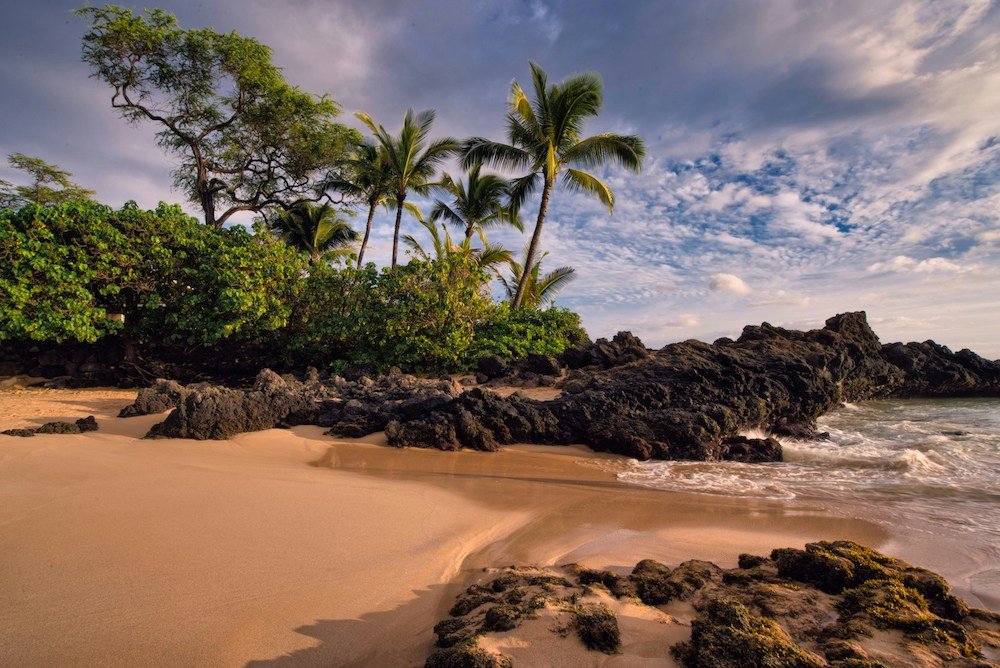
FAQ’s About Kauai & The Big Island:
Is Kauai expensive?
Kauai, like much of Hawaii, can be considered expensive compared to many mainland U.S. destinations.
The cost of living and visiting is higher due to the island’s remote location, which affects the price of goods, services, and accommodations.
However, expenses can vary widely depending on travel style, with options ranging from luxury resorts to budget accommodations and dining choices.
What is so special about Kauai?
Kauai is renowned for its unparalleled natural beauty, often dubbed “The Garden Isle” for its lush landscapes, cascading waterfalls, dramatic cliffs, and pristine beaches.
Its slower pace and less developed environment compared to other Hawaiian islands make it a special retreat for those seeking tranquility, natural beauty, and outdoor adventures without the crowds.
Is Kauai or Big Island better?
The choice between Kauai and The Big Island depends on personal travel preferences.
Kauai offers a more intimate and lush environment ideal for relaxation, nature exploration, and adventure in a more contained setting.
The Big Island, on the other hand, offers diverse landscapes and experiences, from active volcanoes to snow-capped mountains and green sand beaches, catering to those seeking variety and adventure on a larger scale.
What is the crime like in Kauai?
Kauai generally has lower crime rates compared to larger metropolitan areas.
However, like any travel destination, it’s important for visitors to exercise common sense and take standard safety precautions, such as securing valuables and being cautious when exploring remote areas, especially after dark.
When not to visit Kauai?
Kauai is a year-round destination, but visitors might prefer to avoid the rainy season from November through March if they wish to enjoy more outdoor activities in drier conditions.
However, the rainier months also bring lush landscapes and waterfalls to life, offering a different kind of beauty.
Do you really need a car in Kauai?
Yes, to fully explore Kauai and access its various beaches, hiking trails, and other attractions, a rental car is highly recommended.
Public transportation exists but is limited, especially for reaching more secluded areas.
Can you swim in Kauai year round?
Yes, you can swim in Kauai year-round, but conditions vary by season and location.
It’s important to be aware of ocean conditions and heed local advice, as winter months can bring rougher seas, especially on the north shore.
How many days is enough for Kauai?
A minimum of 5 to 7 days is recommended to explore Kauai’s diverse landscapes and attractions without rushing. This allows time for both adventure activities and relaxation.
What is special about the Big Island?
The Big Island is special for its vast and diverse landscapes, including some of the world’s most active volcanoes, unique green and black sand beaches, and the opportunity to experience 11 of the world’s 13 climate zones.
Its size and diversity offer a wide range of activities and experiences, from adventure to cultural exploration.
What is the Big Island in Hawaii called?
The Big Island’s official name is Hawaii Island. It’s called the “Big Island” to avoid confusion with the state’s name and to emphasize its status as the largest island in the Hawaiian archipelago.
What is the #1 thing to do Big Island Hawaii?
Visiting Hawaii Volcanoes National Park to see Kilauea, one of the most active volcanoes in the world, is often ranked as the #1 thing to do on the Big Island for its unique geological features and landscapes.
Is the Big Island too touristy?
While the Big Island is a popular tourist destination, its large size allows for a wide range of experiences, from tourist hotspots to secluded areas where visitors can escape the crowds and enjoy the island’s natural beauty in solitude.
How do I get from Honolulu to Big Island?
The most common way to get from Honolulu to the Big Island is by taking a short domestic flight, typically less than an hour, to either Kona International Airport (KOA) on the west side or Hilo International Airport (ITO) on the east side.
Is Big Island more expensive?
The cost of visiting the Big Island can be comparable to other Hawaiian islands, though expenses can vary based on location, accommodations, and activities chosen.
Some areas and activities may be more expensive, but there are also options for budget-conscious travelers.
Why is the Big Island of Hawaii so cheap?
Certain aspects of the Big Island can be less expensive compared to Hawaii’s more developed islands, such as Oahu and Maui, due to lower demand for accommodations in some areas and the availability of budget-friendly options.
However, “cheap” is relative, and overall costs can still be high compared to mainland destinations.
What is the prettiest part of the Big Island?
Beauty is subjective, but many find the Hamakua Coast, with its lush scenery and waterfalls, and the dramatic landscapes of Hawaii Volcanoes National Park to be among the prettiest parts of the Big Island.
Why dont more people live on Big Island?
The Big Island’s population distribution is influenced by various factors, including the availability of jobs, the cost of living, and the island’s vast and sometimes rugged terrain, which can make certain areas less accessible for daily living and commuting.
